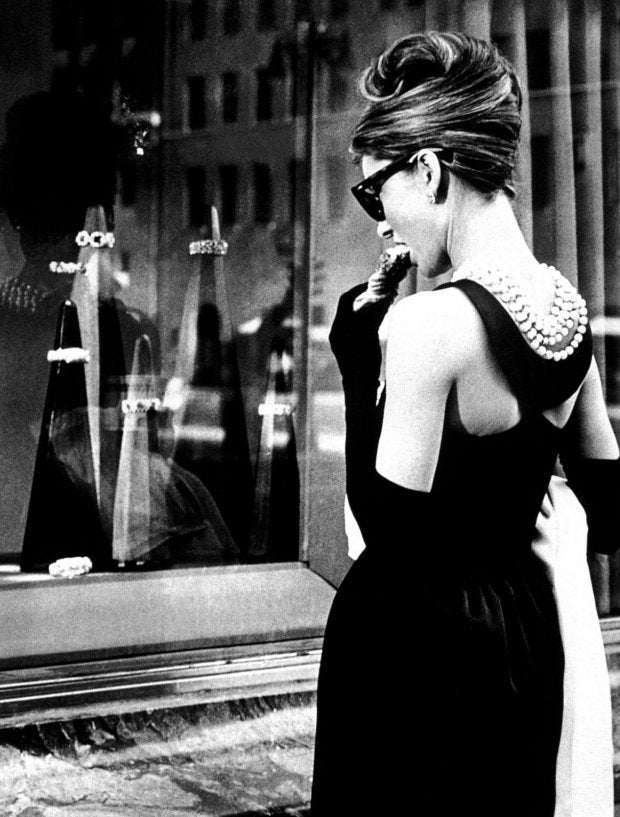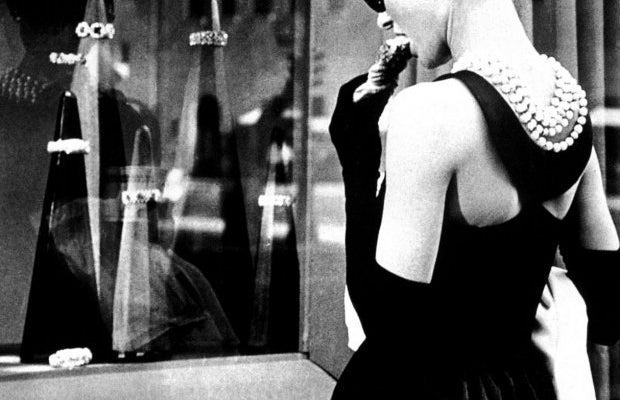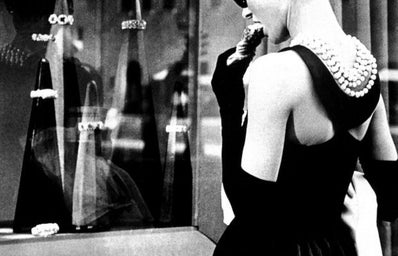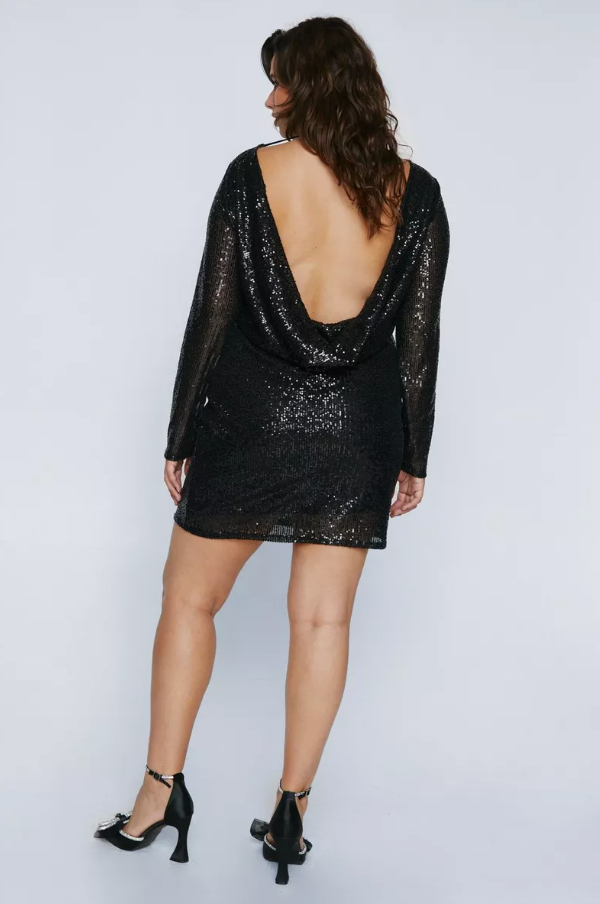A little black dress, or LBD, is an essential. Every woman has one. They can be dressed up or down, or be casual, dressy or somewhere in between. It can be styled in all different ways and comes in all different styles, from chic and sleek to edgy and punk. It’s simple and versatile, which is what every women’s wardrobe aspires to be. LBDs can be worn for years and years, especially if they are quality garments. It’s a go-to item for any woman who (*Cher Hororiwtz*) has nothing to wear.
The LBD being a staple is a fairly new concept, not coming into fruition until the 20th century. Prior to that, black was strictly associated with the wealthy and mainly funeral wear, not widespread fashion.
Firstly, what does black symbolize? Like red, green or blue, its meaning has many different interpretations, but they can be divided into 5 distinctive categories: Darkness, Rebellion, Elegance, Power and Mystery. Black is a sad color and is often associated with feelings of depression, wallflower tendencies and of course, mourning. Black is also associated with rebellion, due to how its often utilized in punk, goth and grunge countercultures. However, black is also a sophisticated color. This is the part of black’s symbolism that is fairly new. Black is neutral that is often seen as sleek, chic and timeless (think Audrey Hepburn in Funny Face or Breakfast at Tiffany’s) Black is also associated with the Wealthy (hence Holly Golightly in Breakfast in Tiffany’s). It’s symbolic of power and authority which is why, as I’ll explain, for a long time it was only worn by the wealthy. The last category is mystery. Black is often associated with dark femininity and the femme fatale archetype. It’s alluring, sexy and intriguing. This is why black is often utilized in shows like The Vampire Diaries, Gossip Girl and True Blood. Black’s association within this category also involves danger and evilness, hence why villains often wear the dark neutral. (Think Ursula, Severus Snape and the Evil Queen in Snow White and The Seven Dwarfs)
The farthest back wearing black as a mourning color goes is back to Ancient Greece, where the wealthy, who could afford the expensive dye, would wear black togas during funerals. It was a status symbol, even during times of mourning. The wealthy wore black and the poor wore whatever they could. After the fall of the Roman Empire, black fell out of favor as mourning attire with white replacing it, becoming favorable to the rich and poor alike. However, during medieval times, the wealthy began to wear black again to further divide them from the lower class and to signal to them that they were mourning. Societal laws from the time prohibited the poor from wearing black, making it even more exclusionary.
In the 15th century, black secured itself a place as a status symbol, with the Spanish court dressing almost exclusively in black. This became a nationwide protocol during the reign of Charles V. Now, at this time, Spain was one of the most powerful countries in the world, so having enough revenue for these kinds of protocols was a big showcase of the country’s status in the world. It was also a great contrast to other European courts such as the British and French monarchies, which has other codes of dress at the time. This allowed Spain to create its own cultural identity and iconic aesthetic. Due to Spain’s power at the time, other European courts took notes and began dressing Spanish-inspired as well, and therefore in black, to further show their status. This shows how influential Spain was at the time. Other countries also started to make laws preventing common people from wearing the dark hue. This was also when black cemented itself as a color representative of wealth, power, authority and status.
Black remained popular among nobility throughout the 16th century, including Henry VII’s memorable reign of England and Louis XIV of France and for much of the 17th century, but started to fall out of favor by the second half of the 17th century, when France’s power grew after Louis XIV’s reign, bringing back the bright, extravagant and colorful into the wealthy’s wardrobe and royal courts, giving way to Marie Antionette’s iconic pastel look. The Georgian era, which began in the early 18th century, began the trend of black clothing being accessible to everyone. More and more people were becoming wealthy due to developments in the industry, which meant they started to develop the mourning etiquette of royalty. Due to the pretentious societal customs, mourning attire becomes an extravagant affair with lavished all-black gowns, as a way to separate themselves from the rest of society. The middle class also started to dress in mourning attire due to the industrial revolution making black fabric less expensive. Fashion journalism also started around this time, so the trend began to trickle down into the lower class, as well. However, it was still very much a luxury, since it was only intended to be worn during a specific time. If a woman couldn’t afford a black dress they would dye or alter one of her other dresses.
However, the lower class was still excluded from the trend of wearing black as everyday attire, with many men wearing tuxedos. Black may have been more accessible, but for not for more then one garment. During the 19th century, mourning practices became incredibly complex in the nobility circles of England, making it a clear sense of classicism. They saw being able to adhere to these protocols as a sign of good breeding. New money families began replicating these practices in order to become accepted by old money families. This idea came across the United States, as well. By the end of the century, the trend has trickled down the classes, and due to the rise in ready-to-wear clothing, black wardrobe and mourning attire became accessible to everyone, with them able to avoid cheaper or secondhand black clothing.
The growing publishing industry also helped with this. Fashion magazines showed women what to wear when mourning and etiquette told people what the correct things were to do when mourning, making it common knowledge as well. During this time, widows were excepted to wear simple black clothing for at least two years (I mean, I do that anyways, but for the time period, that is MINDBLOWING!), although some widows dressed that way for the rest of their lives, and example of a woman doing this is most famously Queen Victoria starting in 1861 and ending at her death in 1901. If a Victorian woman didn’t at least wear black for the allotted two years it was either deemed disrespectful or a sign of promiscuity.
Black still wasn’t seen as a fashionable color during this time. It was only seen as a societal obligation, not a personal choice. There were very few opportunities, or even ways, to wear the color casually. By the end of the Edwardian era in 1910, the color began to be worn by servants, mainly maids, instead of the gray and white or blue and white combinations maids wore in the past. Their uniform became a black day dress and white apron, and maybe a bonnet or some other white headwear (think Dorota in Gossip Girl). Therefore, at its worst, it was associated with death and poverty and at its best was seen as uninteresting and bland. Following World War I, mourning attire became more restrictive because of practicality’s sake. This was because almost everyone knew someone who had died in the war. People did continue to wear black, but not for nearly as long as in the Victorian era.

The rebranding of black as a fashionable color is often attributed to Coco Chanel, who is credited with inventing the Little Black Dress. She designed a short, simple black dress that was featured in an October issue of American Vogue in 1926, at the height of the flapper age. The issue compared Chanel’s revolutionary invention to Henry Ford’s model-T car, calling it “Chanel’s Ford.” Ford’s car was the first car to be somewhat accessible to everyone, so comparing Chanel’s LBD to it meant that it was also accessible to everyone (oh, how times have changed). Chanel said of her simple, sophisticated design “thanks to me, the non-wealthy can walk around like millionaires (oh, the irony),” showing how luxurious the garments were, and still is. In the issue, Vogue predicted that the LBD would become somewhat of a uniform for women with taste, that women all around the world could pull off. And a near century later, it’s difficult to argue against the fact that they were undeniably right.
While Chanel is credited with the invention, she didn’t exactly invent it. Months prior to the article, Vogue published other features about LBD coming into fashion. Chanel’s image is what sealed the deal for consumers due to the brand’s reputation and history. Of statement-making styles and ground-breaking designs. Chanel’s’ garment is just what cemented it as one of the most timeless pieces ever created, giving it its stamp of approval (which is similar to how Paris Fashion Week functions today, with it being the last of fashion month).
The original silhouette of Chanel’s garment featured a drop waist, which was very trendy at the time, with women’s clothing becoming more functional and less restrictive. The hemlines were shorts showing the ankles (the horror) and roomier silhouettes. It’s almost as if Chanel shows how versatile the item could be, only adding a simple silhouette change, not some extravaganza. The drop waist, short dress look emulated the popular gamine look of the time period, as seen in The Great Gatsby and in the first it girl Clara Bow. It made its cinematic debut on Bow in the 1927 film It (hence how the term It girl came to be). It was one of the most popular films of the year, which featured her character transforming her working girl black dress into a daring evening dress, showing the LBD’s versatility from practical and simple to chic and sexy. This helped make the frock less of a classist clothing item and distance itself from the connotations of it being mourning attire. Chanel’s LBD inspired many other designers to replicate their own LBD in their own unique way. This later inspired the trend to trickle down through the department stores at various price points. It’s at this point that the LBD truly became accessible to everyone.
When the Great Depression hit, the LBD still remained popular, however for practical reasons instead of fashionable, due to its’ simplicity and versatility. It could be worn at work, during the day and while entertaining. Due to the difficult economic landscape, lavish lifestyles were now seen as out of touch. Therefore, intimate cocktail parties became common ways for people to gather and entertain. This led to the rise of casual to evening attire, something the simple black dress is perfect for. Up until this point, there was a very clear divide between daywear and eveningwear, but the LBD and the hardships of the 1930s saw that divide shrink, due to the more casual settings of these cocktail parties. Therefore, the LBD could be dressed down with kitten heels and dressed up with costume jewelry.
Just when things began to look on the up and up, World War II began, and so did rationing for the war effort. Luxury items were no longer seen as accessible or appropriate for everyday occasions. Therefore, the LBD allowed women to dress up without it coming off as too flashy or tone-deaf. The LBD was also favorable as workwear because of its durability, with the dark color being the ultimate masking color. It became so popular that by 1944 Vogue said that 10 out of 10 women owned an LBD.
This was also around the rise of the Femme Fatale archetype in cinema (Modern day equivalents would be Maddy Perez and Katherine Pierce, of which black is a mainstay of their wardrobe). These women exemplify the dark femininity side of the dark vs. light femininity dichotomy. With their sexually liberated personalities, they were in direct opposition to the “light,” or conservative, housewife mindset that dominated the American post-war society. Black become near synonymous with the femme fatale archetype and thus began to symbolize danger, mystery, sexuality and promiscuity. Due to this newfound connotation, high society women began to veer away from LBD due to its’ new scandalous connotations.
The LBD came back into fashion and high society in the 50s through Christian Dior’s New Look. Dior believed that black was a color that can be worn anytime, anywhere and by anyone. That is it essential to every girl’s wardrobe, and although he was biased through his design, he was also undeniably right.
The LBD became even more popular when Audrey Hepburn’s Holly Golightly made a show-stopping appearance in a jaw-droppingly glamorous LBD, designed by Givenchy (one of their many iconic collaborations), in the opening sequence of Breakfast At Tiffany’s. It was revolutionary because it was a floor-length gown, not above the ankles like Coco Chanel and Christian Dior’s designs. This signified how the “little” in little black dress was optional, which was very more extraordinary when Mary Quant’s mini skirt became the top trend of the 60s, making little black dresses that much more little. In Breakfast At Tiffany’s, Hepburn’s dress was styled with a long, layered pearl necklace and matching black opera gloves, presenting an undeniably luxurious look. This showed how far the ensemble has come since its days as funeral attire. The character dawns several other LBDs throughout the film, but the opening sequence has remained the most iconic from the film and of Hepburn’s career.
While black and white were a popular color combination during the 60s, the LBD wasn’t as popular throughout the majority of the decade due to the decades’ emphasis on fun patterns and vibrant colors which is understandable after 3 decades of economic hardship and war. The LBD was still worn during the time period within the Mod and Playboy aesthetics, but that was almost entirely exclusive. The best example of this is Megan Draper’s Zou Bisou Bisou dress from Mad Men. Flower child girls and hippies preferred earth tones and bright hues. In fact, the LBD fell so out of favor with the majority of fashionistas that a publication wrote that an LBD will “draw moths,” however the fact that it never truly went out of style just shows much of a force to be reckoned with the garment is.
In the 70s, fashion insiders predicted that the LBD would make a comeback. They were right, as maxi, midi and mini styles began to dominate runways once again, representing the eras’ emphasis on individuality. One of the most popular takes on the LBD was the schoolgirl-inspired look, which Gossip Girl’s Blair Waldorf later perfected in the 2000s. The most iconic image of this was Catherine Deneuve in the film Belle De Jour, who wore a Wednesday Addams-esque LBD in the French film. This Wednesday Addams-chic was popular in the 60s, but began to dominate fashion in the 70s and continued to be trendy in the 90s and 2010s, and no doubt the 2020s due to the upcoming Wednesday series on Netflix, making it one of the most popular and timeless iterations of the LBD, which is already timeless in its own right.
The LBD was a certifiable staple by the time the 80s hit, which was perfect for the influx of women entering the workforce during the time. Madonna was highly associated with color in the early days of her career due to her ensemble in the “Lucky Star” music video. Madonna expertly mixed black’s edgy connotations and its glamorous and sophisticated connotation to create a unique look that is still looking for inspiration today. Her star pair in the 80s was made black, and therefore the LBD, a versatile and popular item during the decade.
In the 90s, Chanel’s iconic design became roughly 60 years old, and people have learned how to have fun with the classic. It was now considered a staple that was well worth the investment. No matter if they are edgy grunge girls or aspiring model-off-duty. Wearing black was mainstream at this point, and its past of being strictly for mourning was nearly forgotten, as you could now be a punk rocker or an elegant sophisticate. The 90s were the era of starlets, supermodels and superstars. 100s of LBDs were worn on TV, in films, on red carpets, in music videos and on the runway, with it becoming synonymous with fashion houses of Saint Laurent, Dior, and of course Chanel. Elizabeth Hurley wore her iconic Versace clothespin dress during this time. They were popular both for glamorous occasions and everyday wear, cementing their versatility.

During the 2000s, 2010s and 2020s, the LBD remains a tried-and-true staple, with almost everyone owning one and sporting one. In an era dominated by overconsumption and an extremely rapid trend cycle, the LBD remains a constant reminder that some trends never die, with Taylor Swift, Zendaya and Olivia Rodrigo becoming recent LBD icons.
There are many icons of the Little Black Dress. Audrey Hepburn is one of them. As aforementioned, she wore one of the most iconic iterations of the Little Black Dress in the 1961 film adaption of Truman Capote’s book Breakfast At Tiffany’s as Holly Golightly. All black outfits were a signature of hers with her appearing in those kidneys of ensembles in films like Funny Face, for events and in her personal life. Gossip Girl’s Blair Waldorf, played by Leighton Meester, is a big Audrey Hepburn admirer and also had the LBD as her signature, usually combined with some sort of sparkly element. She also recreated some of Hepburn’s most iconic LBD moments through dream sequences. Another iconic iteration of the LBD is Princess Diana’s black Revenge dress, which is still fawned over today. One recent LBD icon is Euphoria’s Maddy Perez, who wore a jaw-dropping LBD during Season 2’s premiere episode. The actress who plays Maddy, Alexa Demie, is also a big fan of the LBD, as she wears it on many red carpets.
LBDs can stand the test of time. Instead of buying trend after trend, an LBD that shows off personal style and personality remains a quality investment that is essential for every woman of any age and socioeconomic standing. It can be dressed up or down and be the focal point one day and a blank canvas the next. It’s been nearly a century since Vogue predicted it becoming a timeless staple, and there’s no sign of that changing anytime soon. History proves that an LBD, whether boundary-pushing or simple is the ultimate mainstay.



